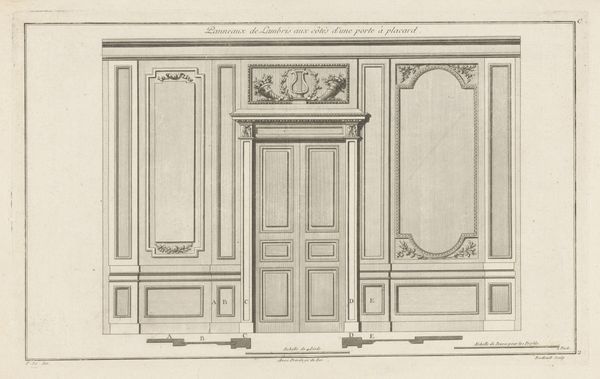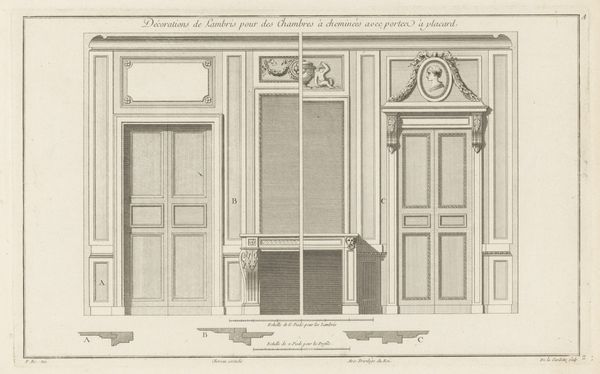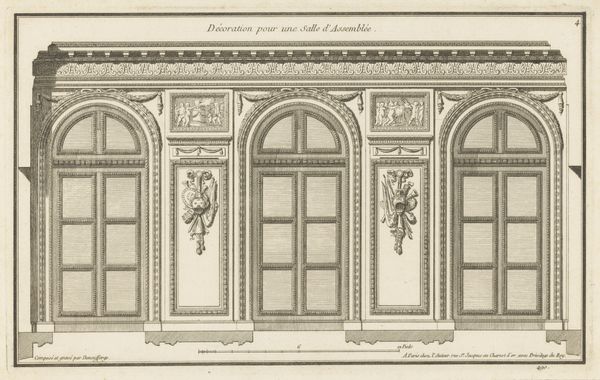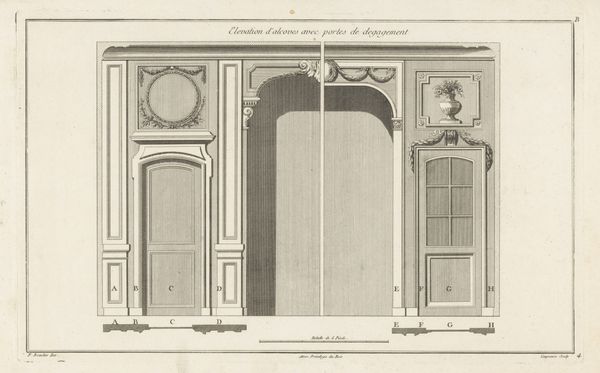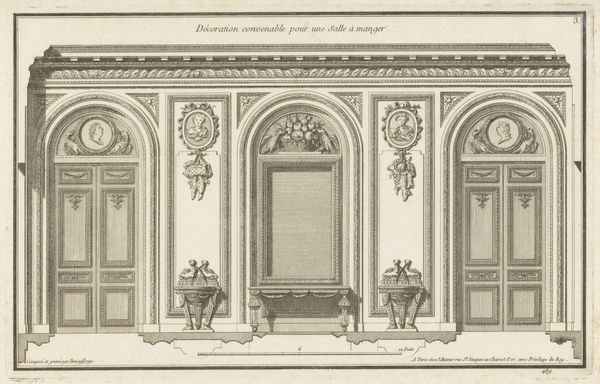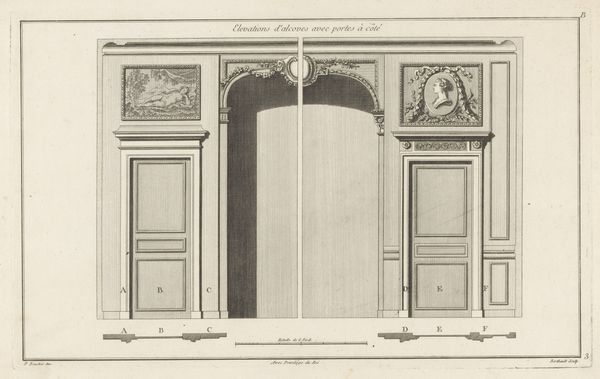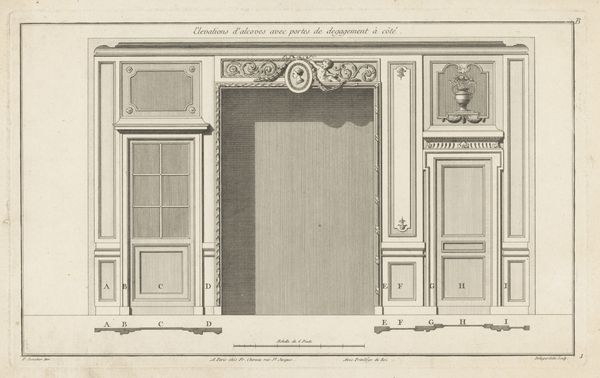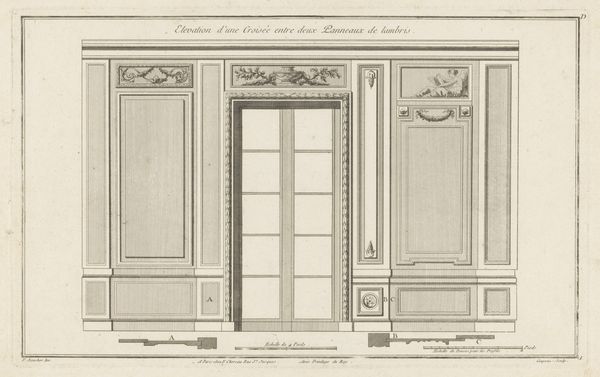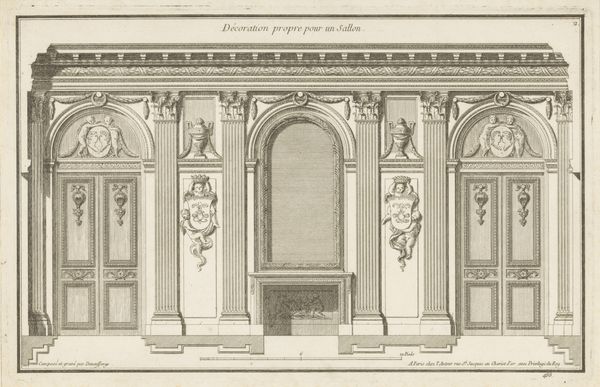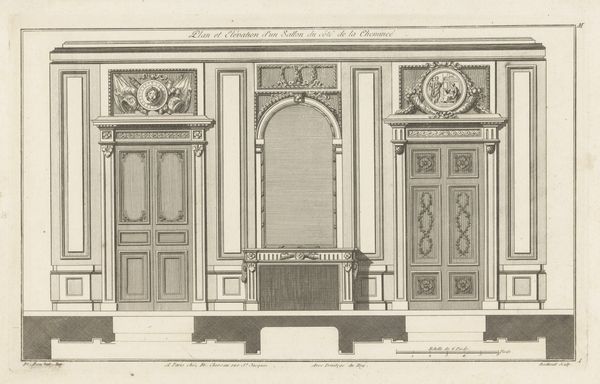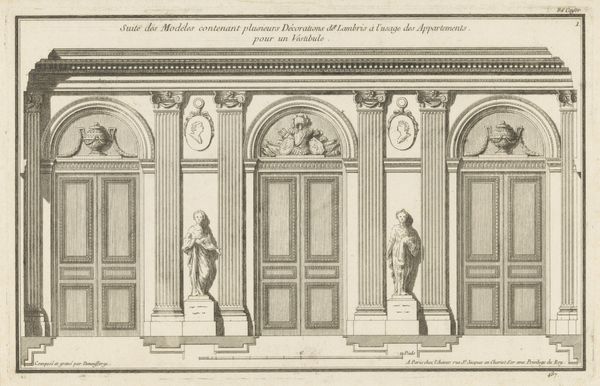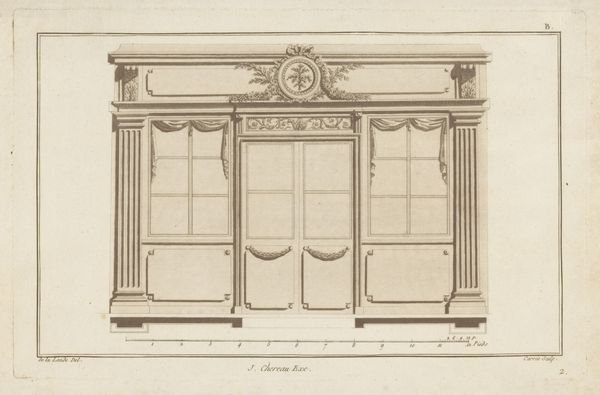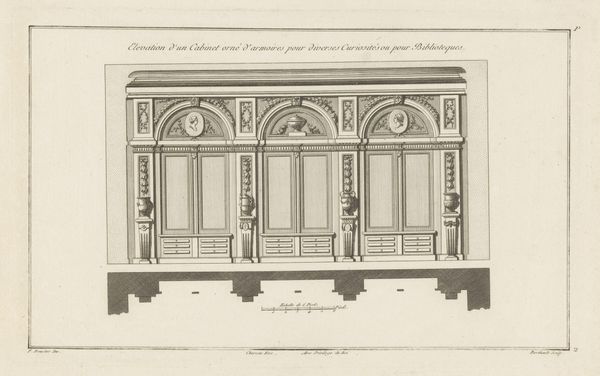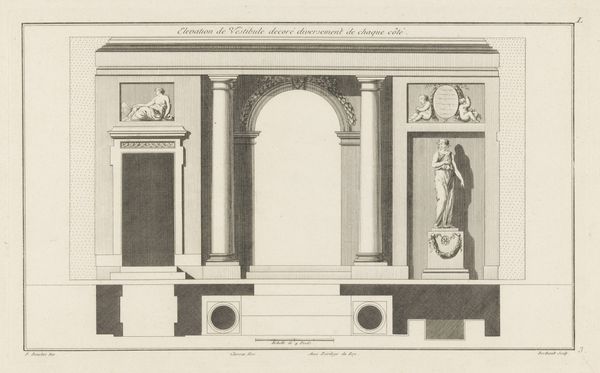
Dimensions: height 222 mm, width 362 mm
Copyright: Rijks Museum: Open Domain
Curator: The engraving before us, titled "Schouw met vaas en putti," which translates to "Mantelpiece with Vase and Putti," is attributed to Pierre Gabriel Berthault, created sometime between 1752 and 1794. Editor: My initial reaction is to the restrained elegance. It’s meticulously balanced, symmetrical almost to a fault, but hints of whimsy peek through. Curator: It’s a fascinating depiction of late Rococo interior design, isn't it? It provides insights into the aspirations and aesthetics of the period, particularly within elite circles. Architectural prints like this circulated widely, acting as guides for craftsmen and tastemakers alike. Editor: Absolutely. Note the crisp lines achieved through engraving, the rhythmic interplay of panels, the controlled curves…It almost feels like a musical composition. The delicate embellishments, those frolicking putti—aren't they a bit cheeky nestled atop the doorframe? Curator: Rococo revels in such playful details, wouldn’t you say? Yet it never abandons decorum. This print reveals the period's investment in classical motifs and the rising cult of interior decoration. Editor: Indeed, it's controlled ornamentation. This careful calibration of forms and textures reveals a lot about its original context, specifically the architectural style's preoccupation with refinement and luxury. This level of detail really draws you into the scene and makes you imagine life within the confines of its design. Curator: Furthermore, consider how prints like these democratized architectural knowledge. The transfer of this style became more easily available through the market which, of course, had socio-economic and political implications in shaping society. Editor: I agree wholeheartedly. Studying this work in the museum makes us realize just how well this piece operates in its subtle arrangements of lines. And for the careful balance of forms, its refined use of engraved texture allows it to exemplify that certain Rococo restraint. Curator: From a historian’s point of view, it's fascinating how seemingly decorative items reveal the evolving dynamics of power and aesthetics. Editor: And from a formalist viewpoint, one can truly understand how, even within prescribed parameters, the hand of the artist allows its composition and texture to transcend utilitarianism.
Comments
No comments
Be the first to comment and join the conversation on the ultimate creative platform.
